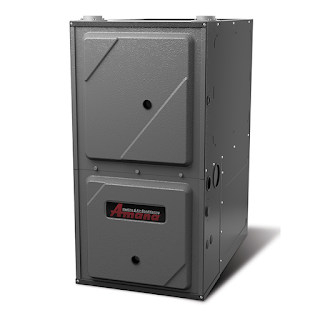Today, most of us understand how essential good air quality is to health, particularly indoors, where we spend most of our time. However, we often fail to realized just how polluted our indoor air may be – according to the Environmental Protection Agency (EPA), 2-to-5 times more polluted than the air outdoors. With most Americans spending 90% of their time inside homes and offices, becoming aware of simple things that can be done to improve indoor air quality is essential.
Under the Weather? It Could Be Poor Indoor Air Quality
Those regularly confined to buildings with poor indoor air quality suffer from frequent illnesses, allergies, and worsened asthma symptoms. Chronic congestion, sneezing, runny nose, coughing, eye irritation, and headaches are common in locations with poor indoor air quality. If you suffer these symptoms constantly, it would be wise to consult an indoor air quality service for help identifying hidden or overlooked air quality problems in your home or office. Long-term exposure to poor indoor air quality has been linked to serious diseases, including heart diseases, respiratory diseases, and cancer. Even if you don’t notice such health symptoms, it is wise to try and improve the air quality in your home of office.
Simple, Affordable Ways To Improve Indoor Air Quality
- Regularly change home air filters.
Dirty air filters can harbor a host of contaminants that can be distributed through your ductwork, system components, and ultimately your home or office. Dust and debris blockages also sabotage performance, forcing your system to work harder. Inexpensive and easy, simply regularly changing your air filter every 1-3 months is an essential step toward cleaner, fresher indoor air. - Integrate HEPA-rated air filters.
An air purification system can be easily added to your home heating and air conditioning, alongside UV light air purifiers, for far less than the cost of the purchase of multiple portable units, offering a more thorough cleaning of the air throughout your home or office. Avoid bargain doppelgangers marked ‘HEPA-like’ or ‘HEPA-style’, identifying true HEPA filters with a MERV rating of 10+ to ensure the removal of smaller particles of pollutants from indoor air. Be sure to install it with the help of a trained technician, as the tighter construction of these filters can cause system damage if necessary HVAC component adjustments are not made. - Add a Whole House Humidifier
Studies have shown a direct correlation between higher humidity levels and a decreased likelihood of flu. Whole house humidifiers, in conjunction with other indoor air quality components like HEPA filters and UV light air purification, keep mucous membranes moist, preventing cracking and helping hairs within sinuses dispel foreign pathogens. - Check Ductwork Regularly
In addition to annually servicing heating and cooling units, ductwork should also be regularly inspected to ensure leaks or poor ductwork connections, pest debris, mold, and pollutant buildup from attic/crawlspaces aren’t dirtying your ducts and negatively impacting air quality.
What’s the source of that tickle? Ensure a healthier winter season. Identify air quality issues in your home or office with the help of H&H Heating & Air Conditioning today.
This blog was originally posted on https://www.delcohvac.com/how-can-you-improve-indoor-air-quality/






